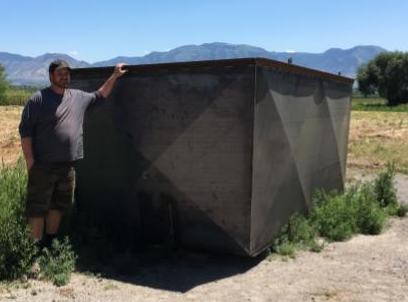Big Box Burning

Efforts have focused on preparing to treat hazardous fuels with Big Box kilns this fall and winter. The first of three Big Box kilns is complete and ready, it measures 16’ long, 7.5‘ wide, and 6’ tall. We purchased a 16-foot deck-over aluminum trailer to haul the Big Box kilns.
I have secured funding from the Bureau of Land Management to build our second Big Box kiln and to cover a portion of operational costs of implementing the Big Box kilns on BLM land. Additionally, I plan to utilize an existing grant from the USDA Forest Service to build a third Big Box kiln. I have lined up contractors to operate the Big Box kilns on federal and private lands in Utah. Site locations have been selected in cooperation with partners from the Logan Ranger District and the Heber-Kamas Districts of the Uinta-Wasatch-Cache National Forest and in Scofield on private land. I am also working with the Heber-Kamas Ranger District to arrange for the sale of the biochar produced, establishing a value for this material in Utah. It is notable that a national team of scientists have submitted a grant proposal in to PG&E in California, the team has adopted the name and approach of Big Box kilns, following Utah’s lead. I am on the advisory board of this team by invitation.
I continue to collaborate with colleagues from Oregon and other states that are concurrently developing similar approaches, and applying their results to modify the design to incorporate lessons learned. For example, they are having beneficial results from building with double-wall construction, and adding lids to the kilns, I am currently investigating means of incorporating these approaches into my design.
USU Extension Assistant Professor Darren McAvoy, Department of Wildland Resources, Darren.Mcavoy@usu.edu Collaborators: Associate Professor Jim Lutz and Professor Michael Kuhns, Department of Wildland Resources

